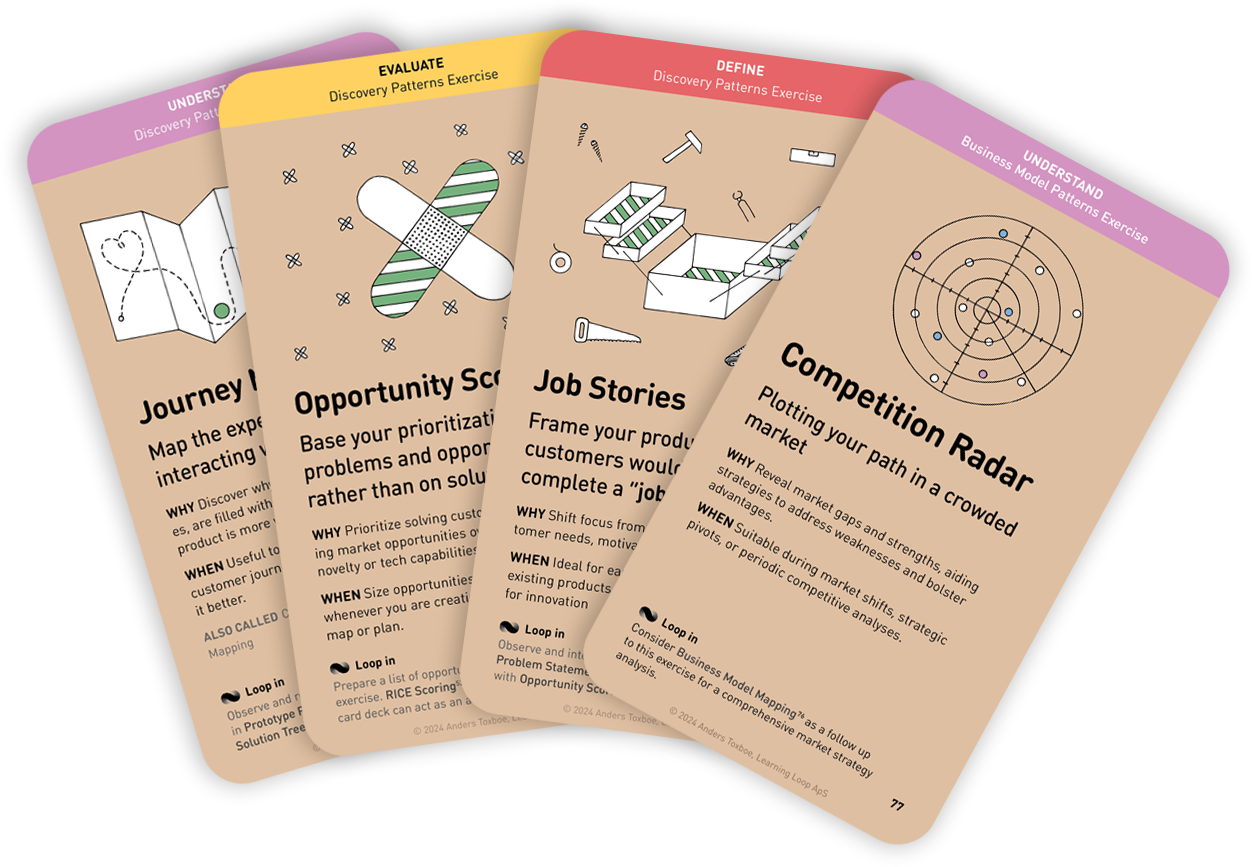Workshop Exercises: Evaluate
PIE Scoring
Prioritize ideas for efficient use of resources and business goal alignment

Why: Ensures focused effort on high-impact, feasible design tasks aligned with business goals
When: Use to filter out the noise after having generated a long list of opportunities or other items to focus on
The primary aim of the PIE Prioritization Framework is to provide a systematic method for evaluating and ranking various design opportunities or challenges. By assessing each potential project against the criteria of Potential, Importance, and Ease, teams can prioritize tasks in a way that aligns with business objectives and resource availability.
As product teams often work with limited resources, the PIE prioritization framework can help ensure that these resources are allocated to projects with the highest potential for positive impact. This structured approach help reduces subjective biases, leading to at least more objective and data-informed decision-making.
Instructions for running this play
- **Briefly explain the PIE framework, focusing on the three criteria: Potential, Importance, and Ease.
- List opportunities
Conduct a 5 minute Silent Storming session where participants individually write down testing and optimization opportunities on sticky notes, one per note. - **Present and arrange
**Have each participant briefly present each of their sticky notes as they place them on a large surface. Remove duplicates and arrange notes on a vertical line. - Individual assessment
Distribute PIE scoring sheets with the three criteria as rows. Allow a Timebox of 10-20 minutes to let participants individually assess each opportunity based on Potential, Importance, and Ease on a scale (e.g., 1-5). - Group discussion and consensus
Create three columns on a large surface with the three criteria. As a full group, discuss each opportunity to reach consensus on the PIE scores. As scores are agreed upon, note them down on sticky notes and place them in the corresponding column. - Selection & strategy
Based on their scoring in the grid, select the top opportunities to focus on. Discuss a preliminary strategy for implementing these top-priority ideas.
Next steps
Use the completed matrix as a reference for future decisions, indicating which items hold higher priority and should be focused on first.
Tips to perfect this play
Master and adapt the play to fit your context and needs.
Tip: Ensure understanding
Before starting the exercise, clearly explain each element of the PIE framework (Potential, Importance, and Ease). Provide examples to help participants understand how each criterion applies to real-world projects.
Tip: Align on definitions
To avoid confusion during scoring, make sure the team agrees on what "Potential," "Importance," and "Ease" mean within the specific context of the project or product being discussed.
Tip: Set clear scoring criteria
When distributing the scoring sheets, explain the scale (e.g., 1-5) and provide specific examples of what a "1" versus a "5" might look like for each criterion. This will make scoring more consistent across participants.
Tip: Avoid group influence
During the individual assessment phase (encourage Silent Storming as well), encourage participants to focus on their own perspectives and avoid being influenced by others. This promotes diversity of thought and minimizes groupthink.
Tip: Balance scores with context
While the PIE framework provides a structured approach to prioritization, remind the group that context matters. Some opportunities with lower scores might still be strategically important due to external factors, and the group should remain flexible in their final decisions.
Tip: Highlight discrepancies
If there are large differences in scores for certain opportunities, bring those discrepancies to light and guide the group in discussing why they occurred. This often leads to more nuanced and thoughtful decisions.
A collection of workshop exercises that will help you ditch dull meetings and facilitate with confidence. It will help you master the design process and have more productive time with your team. The card deck will be ready for purchase in the end of 2026 and is now undergoing rigorous testing.
Reserve your deck!